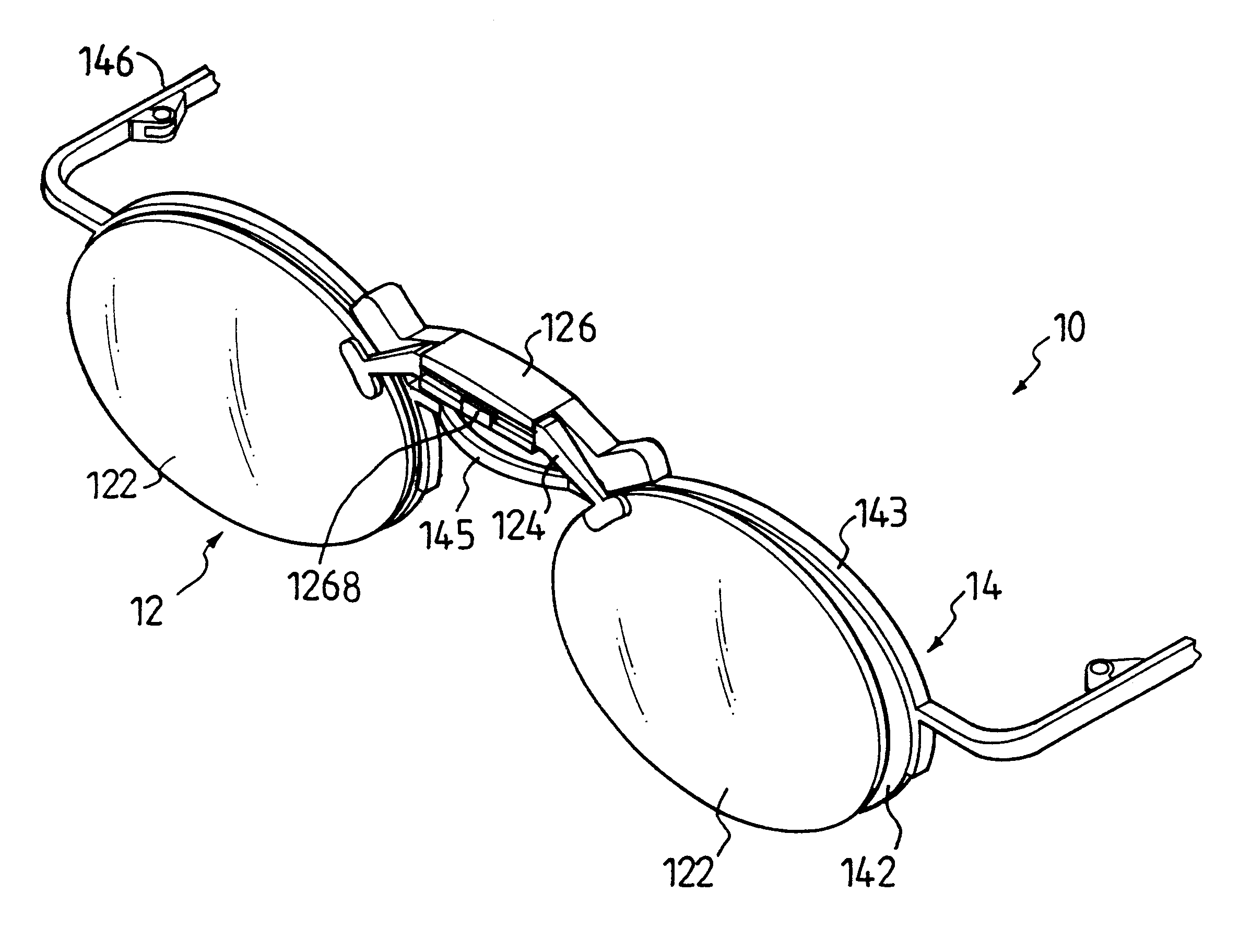Auxiliary eyewear with laterally distant magnets on lens retaining mechanisms
a technology of magnets and lens retaining mechanisms, which is applied in the field of auxiliary frames with lenses, can solve the problems of obstructing the wearer's vision, scratching the lenses of the primary frame, and scratches on the lenses and the primary frame, and achieves the effects of convenient, firmly and elegantly attaching the auxiliary frame, strong support and easy manufacturing
- Summary
- Abstract
- Description
- Claims
- Application Information
AI Technical Summary
Benefits of technology
Problems solved by technology
Method used
Image
Examples
Embodiment Construction
FIG. 1 shows a perspective, exploded view of eyewear 10 of this invention. The eyewear 10 includes an auxiliary frame 12 and a primary frame 14.
The auxiliary frame 12 includes two auxiliary lenses 122; an auxiliary lens retaining mechanism 124 for retaining the auxiliary lenses 122 in a laterally opposed relation; and an attachment mechanism 126 joined to the auxiliary lens retaining mechanism 124 and including two magnets 1262 (FIG. 3) respectively at laterally opposing positions (e.g. ends) thereof.
In this embodiment, the auxiliary lenses 122 are retained together by the auxiliary lens retaining mechanism 124. The auxiliary lenses 122 may also be retained within a pair of closed frames or partial wired frames that are connected by a bridge for stylish purposes.
The primary frame 14 includes two primary lenses 142 forming a lens plane; two primary lens retaining mechanisms 143 for retaining the primary lenses 144; a nose bridge 145 connecting the primary lens retaining mechanisms 14...
PUM
 Login to View More
Login to View More Abstract
Description
Claims
Application Information
 Login to View More
Login to View More - R&D
- Intellectual Property
- Life Sciences
- Materials
- Tech Scout
- Unparalleled Data Quality
- Higher Quality Content
- 60% Fewer Hallucinations
Browse by: Latest US Patents, China's latest patents, Technical Efficacy Thesaurus, Application Domain, Technology Topic, Popular Technical Reports.
© 2025 PatSnap. All rights reserved.Legal|Privacy policy|Modern Slavery Act Transparency Statement|Sitemap|About US| Contact US: help@patsnap.com



